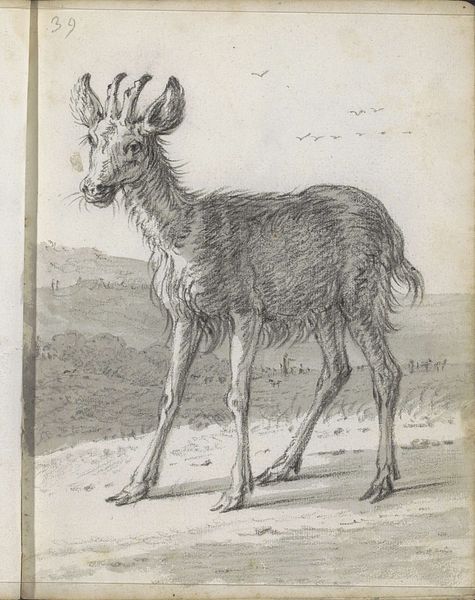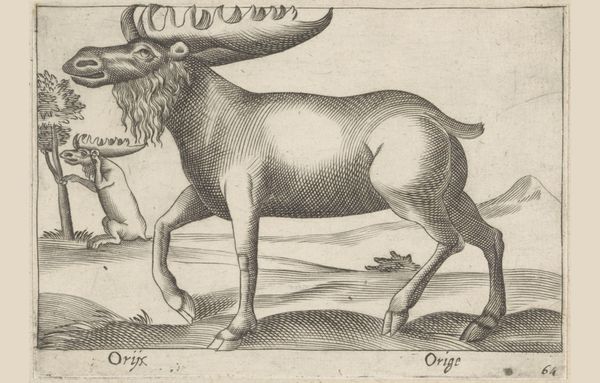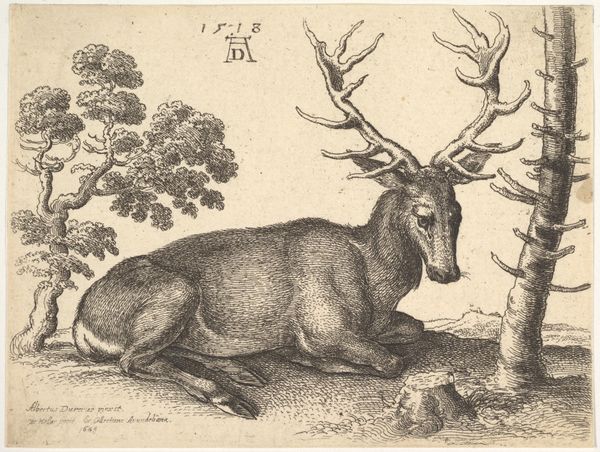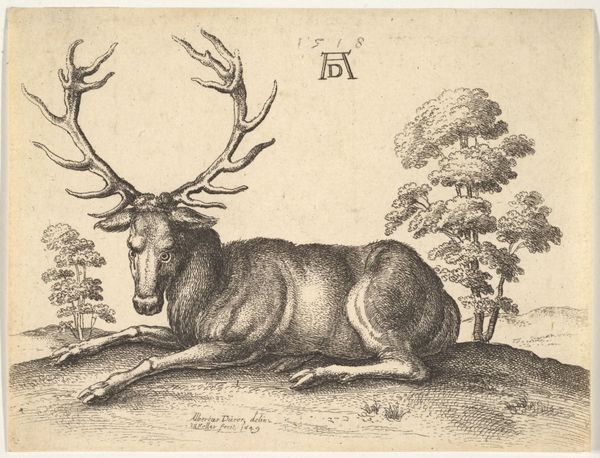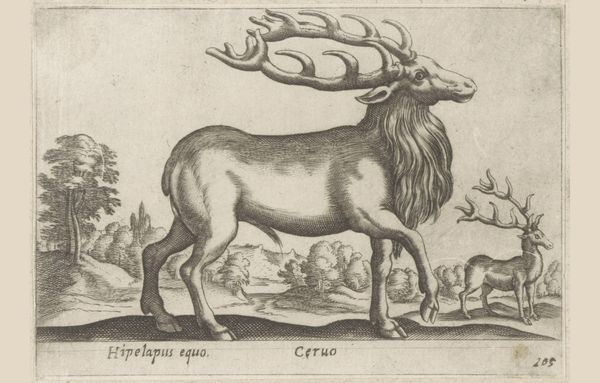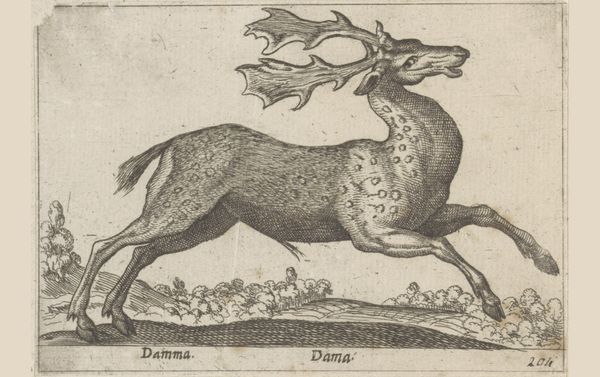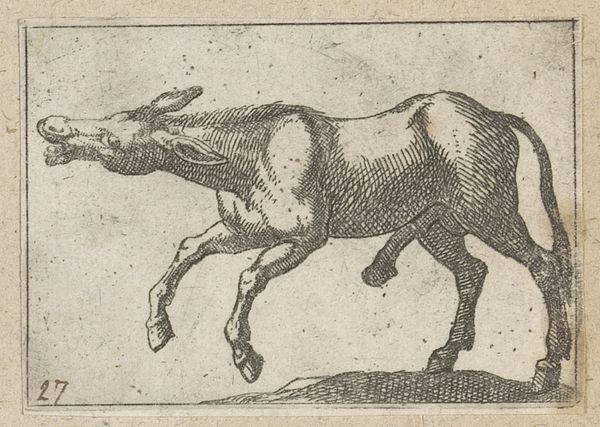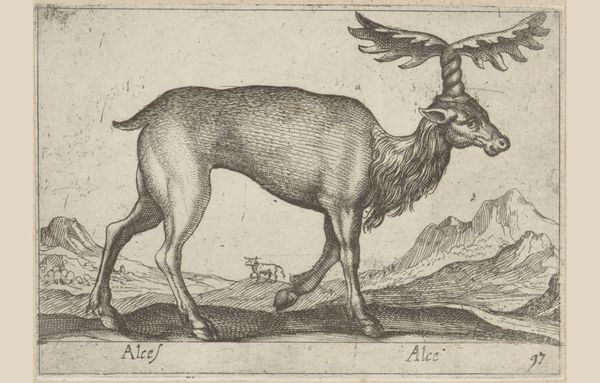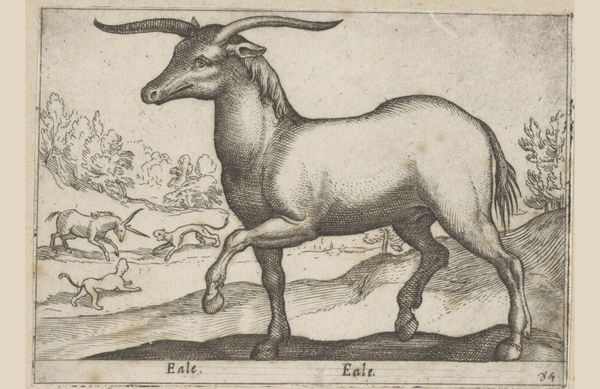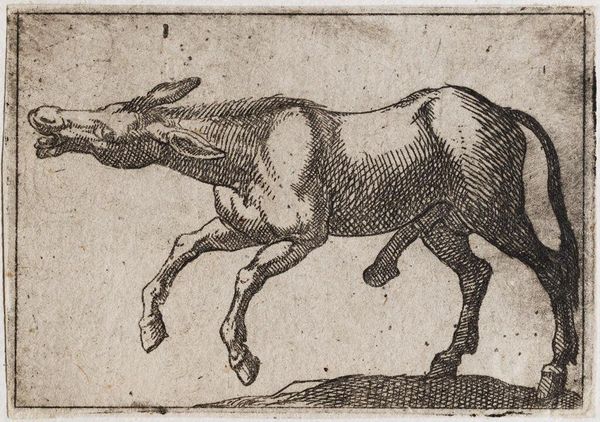
print, engraving
# print
#
landscape
#
history-painting
#
engraving
Dimensions: height 95 mm, width 137 mm
Copyright: Rijks Museum: Open Domain
Editor: This is "Eland," a print made by Antonio Tempesta before 1650, held at the Rijksmuseum. I'm struck by the meticulous detail, especially the cross-hatching used to create shading and texture. It's almost scientific in its precision. What do you make of it? Curator: The most immediately compelling formal element is, indeed, Tempesta's handling of line. Consider the systematic way he's used engraving techniques to model form and suggest light, creating this wonderful contrast between the foregrounded eland and the receding landscape. Notice how the density of lines shifts and coalesces to create the form, to convey spatial depth and shadow. How does that affect your reading of the image? Editor: I see what you mean. It's like he's building the forms with tiny lines, almost like a topographical map. The smaller deer in the background has less defined lines, it appears flatter. I wonder about his focus on representing this animal in such detail... Curator: Exactly. The artist directs our gaze, placing this main figure front and center through linear density. Observe the subtle variations: diagonal hatching versus cross-hatching versus parallel lines. Each conveys a unique texture and dimension. It allows us to really engage with the artist’s way of seeing. Consider also how the ground plane functions. Is it convincing? Editor: Not entirely. The perspective seems slightly off, particularly where the animals stand, especially by the tree, it is more defined, but then flattens as we reach the eland. Almost as if multiple perspectives were considered to make one drawing. Curator: Precisely. These subtle ambiguities might betray more about the period's understanding of both artistic license and of scientific illustration, inviting us to ask what Tempesta was truly intending. Editor: I've definitely gained a greater appreciation for how line work alone can create a rich and detailed image. Curator: Indeed. By attending to these formal elements, we uncover a deeper understanding of the artist’s intentions and technical prowess.
Comments
No comments
Be the first to comment and join the conversation on the ultimate creative platform.
